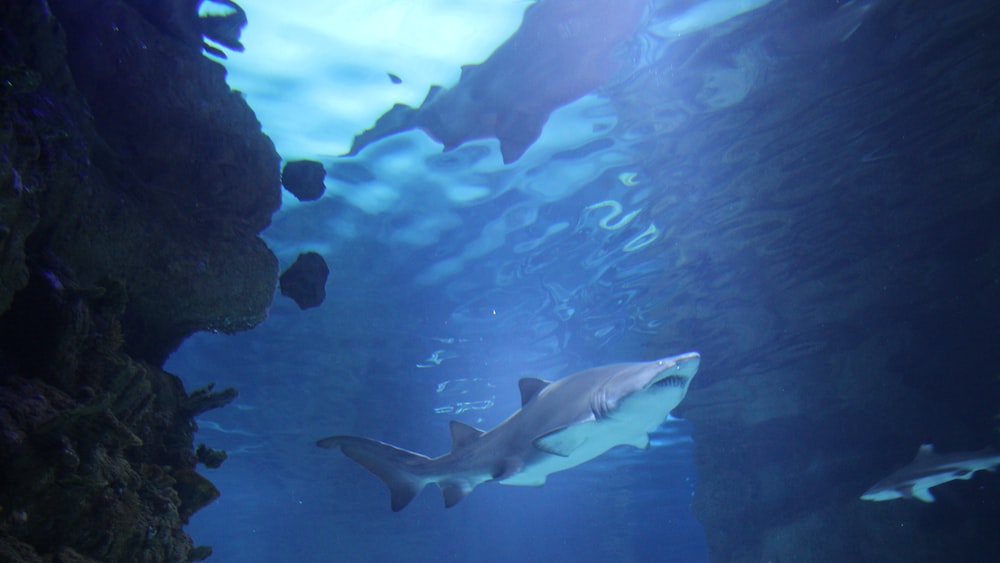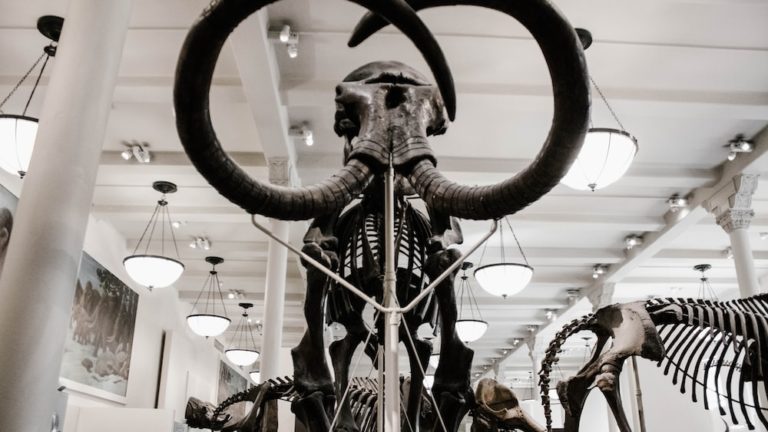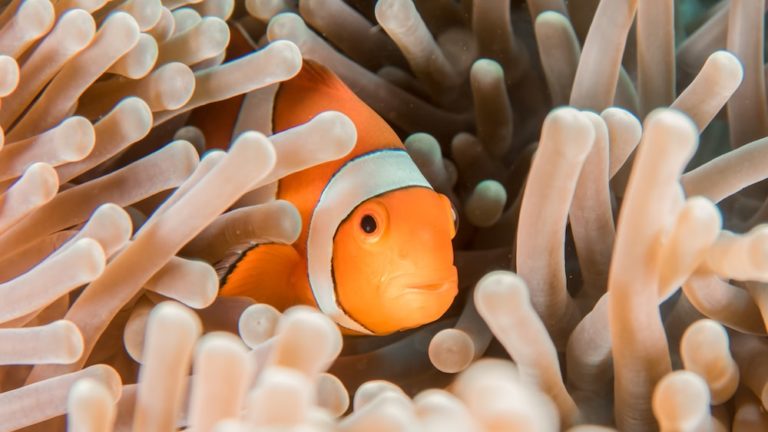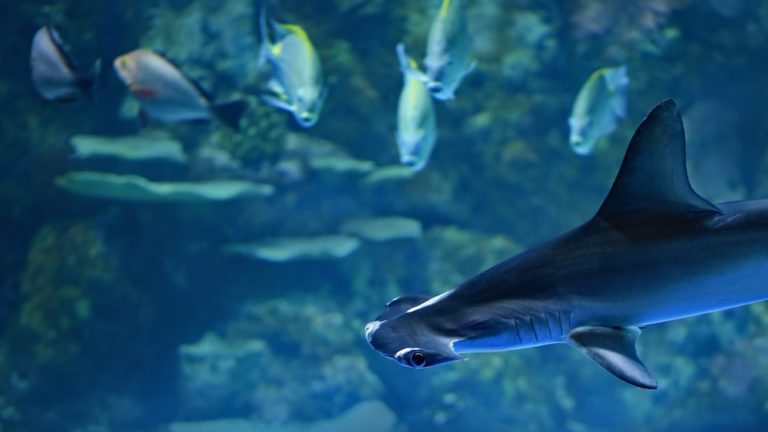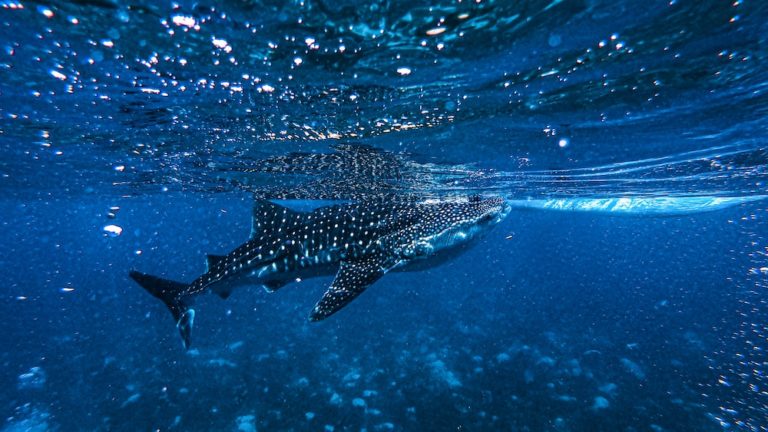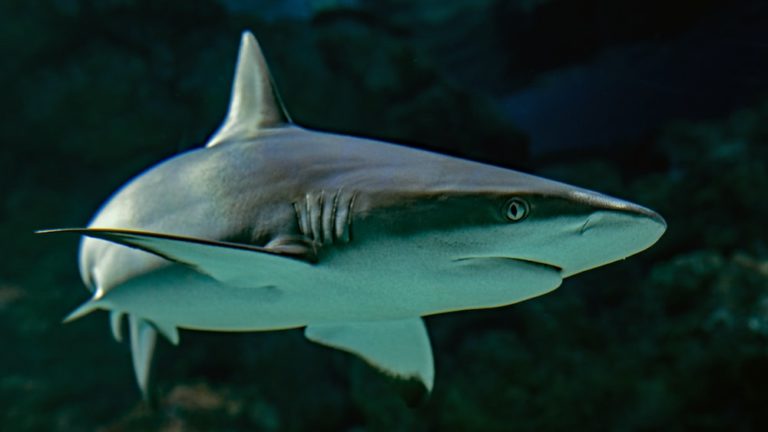What Do Blue Sharks Eat? – A Complete Guide
What Do Blue Sharks Eat? – A Complete Guide
Dive with me, friends, into the cerulean depths where the indigo wanderers of the sea – commonly known as blue sharks – reign supreme. These streamlined mariners are much more than the sum of their cartilage and teeth; they are a riddle wrapped in a mystery inside an enigma of the open ocean. For enthusiasts like us, the question, “what do blue sharks eat?” piques our curiosity not just for trivial pursuit, but for the understanding it grants us of the intricate tapestry that is marine life.
In my countless adventures across the globe’s vast and briny expanse, I’ve danced in the water’s waltz with these beguiling creatures and glimpsed into their daily lives. It’s a tale of survival, of roles played in a liquid theatre where every act matters. When we explore what blue sharks eat, we reveal the navigational map of their existence and, inadvertently, the health of our oceans.
So, let’s board this virtual submarine of knowledge, equipped with an appetite for discovery equal to our finned friends’. Along this journey, we’ll unveil not just the species and creatures that comprise the blue shark menu, but also how these predators shape the marine ecosystems they inhabit. All hands on deck, for we’re about to set sail!
Unveiling the Diet of the Blue Shark
Unraveling what blue sharks eat is akin to opening a treasure chest of oceanic wisdom, each prey item another jewel of insight. Blue sharks are not picky diners; theirs is a varied menu that reflects the richness of the ocean’s buffet. They anchor the food chain in place, selecting delicacies from a smorgasbord that is continuously spread beneath the waves.
The Importance of Understanding Blue Shark Feeding Habits
Understanding what blue sharks eat is the golden key to conserving these magnificent creatures and the seas they patrol. Their diet tells a story of migration patterns, ecosystem health, and ultimately guides measures for sustainable ocean management. As marine life enthusiasts, we’re not just casual observers but guardians of knowledge – tasked with the safeguarding of these blue denizens.
We must grasp the details of their diet to appreciate the complexity of these graceful predators. It plays a colossal role in maintaining the ocean’s balance, with each dining choice sending ripples through the water column. So, consider this knowledge as your personal periscope, allowing you to peer into the underwater world with a clarity that fosters respect and inspires conservation action.
When we analyze the staple foods and occasional treats of the blue shark, we stitch together a wider ecological quilt, showcasing the interconnectedness of sea life. The dietary habits of blue sharks serve as a barometer, signaling alterations within their habitat. Monitoring these changes arms us with the ability to predict, and hopefully prevent, adverse effects of human activities on our oceans’ health.
Understanding the diet of blue sharks is crucial for conserving these creatures and the health of the oceans, guiding measures for sustainable ocean management and inspiring conservation action.
The Role of Blue Sharks in Marine Ecosystems
Just as every ship needs its captain, every ocean requires its regulators, and blue sharks fit this bill to a T. These creatures are not merely survival artists; they’re indispensable players in the vast arena of marine ecosystems. By preying on the weak and sick, they act as purifiers, preserving the vigor of the species on which they dine.
Sculpting the seascape by their dietary preferences, they’re architects of biodiversity, ensuring that no single animal dominates the underwater hierarchy. A reduction in their numbers, it goes without saying, would be like erasing an essential species from an ever-delicate equation, the results of which could spill over into waters we’ve yet to chart fully.
The Blue Shark’s Hunting Techniques and Feeding Behavior
To truly understand what blue sharks eat, one must delve into the how of the matter – how these agile predators employ a blend of stealth, power, and acumen to procure their meals. Their feeding behavior is not simply about sustenance; it’s a dance choreographed by evolution, performed flawlessly in the marine ballet.
Sensory Adaptations for Hunting
The blue shark’s repertoire of sensory tools is tailored for the hunt, each adaptation an evolutionary marvel fine-tuned for efficiency. In the azure kingdom, where sight is often not a luxury, olfactory prowess reigns supreme. It’s through the faintest whiff of blood that our protagonists detect the presence of a potential feast – sometimes over miles of open sea.
Electroreception, an ability to perceive electrical fields, further endows blue sharks with the power to sense the heartbeats of hidden prey. As if taking cues from a mysterious underwater symphony, they can home in on creatures concealed by the sands or veiled in darkness, making them formidable hunters of the depths.
Typical Hunting Strategies of Blue Sharks
Navigating the marine expanse like ghostly shadows, blue sharks employ hunting strategies as dynamic as the waves. They are known to scan the surface from below, silhouetting prey against the light above before deciding to strike. This split-second decision is often preceded by careful, almost deliberative stalking, which may seem deliberate to the untrained eye.
In what might be considered a feat of maritime ninja, these sharks also utilize vertical attacks – they approach from the depths at a speed that leaves little chance for escape. The blue shark’s attack is an art form, reflecting an elegance and preciseness that even the most skilled human hunters might envy.
The Varied Menu of the Blue Shark
So, what do blue sharks eat? Their menu is as diverse as the ocean itself, changing with currents and seasons. From the humble squid to the swift tuna, the blue shark’s diet is a smorgasbord that satisfies not only their hunger but shapes the environment they steward.
Preferred Prey and Common Foods
When you toggle the caption ‘a blue shark,’ you’re likely to unveil an opportunistic predator with a diet as varied as the colors of the ocean. Contrary to popular belief, these pelagic swimmers aren’t indiscriminate in their feasting. Their preferred prey primarily consists of small fish like herring, sardines, and anchovies, which they snatch up with remarkable efficiency.
Aside from these school-dwelling delights, blue sharks exhibit a taste for cephalopods including squid and octopus. But that’s not all; they’re also known to dine on sea birds and dead marine mammals, indulging in the ocean’s bountiful buffet. To truly understand what do blue sharks eat, one must realize that it’s not just about survival – it’s about thriving in their blue domain.
Seasonal Variations in Diet
Blue sharks are not just masterful hunters; they’re also seasonal gourmets. With the changing of ocean currents and the migratory patterns of prey, what do blue sharks eat can oscillate like the ebb and flow of the tides. During the summer months, you’ll find these sharks gorging on abundant schools of mackerel and squid that flourish in warmer waters.
When winter casts a chill upon the sea, the menu switches to include species like the hearty, oil-rich sea lamprey and other deep-water denizens that brave the cold. These seasonal variations don’t just highlight the shark’s adaptable palate; they also reflect the dynamic nature of our ocean’s ecosystems and their inhabitants.
Blue sharks are adaptable eaters, altering their diet based on seasonal changes in ocean currents and prey migration, showcasing the dynamic nature of ocean ecosystems.
The Impact of Blue Shark Feeding Habits on Ocean Life
The dining habits of blue sharks are like the strokes of an impressionist painting – each bite shapes the marine landscape in subtle yet profound ways. Their role in regulating the populations of their prey is an ecological service that often goes unnoticed, yet it’s as critical as the moon’s role in influencing the tides. By consuming sick, weak, or overabundant species, blue sharks help maintain a healthy, balanced marine environment.
Blue Sharks as Apex Predators
As apex predators, blue sharks are akin to ocean custodians, keeping the marine ecosystem tidy and functioning. Their very presence signifies healthy biodiversity; a beacon of balance in the deep blue. Blue sharks’ hunting prowess is supported by their sleek, torpedo-shaped bodies, enabling them to quickly and gracefully navigate through the water.
They don’t just keep prey populations in check – they cull the weak and the sick, ensuring the robust genetic stock of their targets. In this way, blue sharks indirectly maintain the vigor of diverse species, propping up the lower tiers of the food web. It’s a crucial role that could be likened to a gardener pruning a wild, sprawling hedge.
The Balance of Marine Food Webs
The harmony of marine food webs can be attributed, in part, to the dietary decisions of blue sharks. Their place at the top of the food chain makes them more than predators; they are arbitrators of the ocean’s complex, living network. If you pull at one thread in this aquatic tapestry, such as the blue shark’s survival, the entire structure could undulate distressingly.
The effect of their feeding extends beyond the immediate consequences for their prey. By bequeathing the oceans with a self-regulating population control mechanism, blue sharks enable the flourishing of a multitude of species. They serve as a check against any one species monopolizing resources, thus promoting a diversity that is the cornerstone of ecological resilience.
Human Interactions with Blue Shark Diets
Our interactions with the oceans ripple back to affect blue sharks, for better or worse. Learnanimal factsheetsfishesblue shark studies have chronicled how human activity, whether it’s commercial fishing or climate change, increasingly intersects with the lives and diets of these marine predators. Understanding these intersections is key to conserving not only blue sharks but the entire marine ecosystem.
The Effects of Overfishing on Blue Shark Food Sources
The relentless trawl of overfishing is a looming specter over the oceans – an unseen turbulence disrupting the diets of blue sharks. With their prey dwindling in numbers, these predators are often forced to alter their diet or risk starvation. Learnanimal factsheetsfishesblue shark sources reveal alarming trends: schools of fish that were once abundant have now faded into the murky depths of scarcity, largely due to overfishing.
As staple species become harder to find, blue sharks may toggle their dietary preferences, but this isn’t just a matter of switching to a different seafood platter. These shifts result in broader ecological consequences, as alternative prey might not provide the same nutritional value or may disrupt other species’ feeding habits. It’s an intricate dance where overfishing steps on the toes of every participant.
Overfishing is causing a decline in the prey of blue sharks, leading them to alter their diet and impacting the entire ecosystem.
Blue Sharks as Bycatch: Implications for Their Diet
When it comes to the unforeseen entanglements of ocean life, the issue of blue sharks being caught as bycatch is a tangled net we must work to unravel. Caught up in the crosshairs of industrial fishing, these agile mariners often find themselves on the unintended end of a fisherman’s bounty, which can have detrimental effects on their diet. In the absence of a fish slapper to ward off pesky humans, the reduction in available prey due to overfishing leaves blue sharks eyeing an ever-dwindling buffet of ocean delicacies.
The implications for their diet are significant. As they swoop through the cerulean depths, these sharks rely on a smorgasbord of squids, fishes, and the occasional seabird. Getting trapped as bycatch not only snatches them away from their native hunting grounds but can also limit their natural behaviors and alter their eating habits. With their usual menu items being swept up in fishing nets, blue sharks are often forced to switch to suboptimal diets or starve.
At the heart of the matter, the change in diet due to bycatch can ripple through marine ecosystems. Blue sharks, sculpted by evolution to perform a specific role, find their ecological niche drifting away like a boat untethered from the dock. This not only impacts their survival and health but also the health of the entire ocean system they belong to, emphasizing the need for sustainable fishing practices to preserve the delicate balance beneath the waves.
FAQs
1. What are the primary components of a blue shark’s diet?
The primary components of a blue shark’s diet include a variety of squid and fish species, amongst which are small bony fish, herring, and mackerel. Dive a little deeper, and you’ll find that they also relish the occasional seabird that skims too close to the water’s surface.
2. How do blue sharks hunt their prey?
Blue sharks hunt their prey using keenly honed sensory adaptations that allow them to detect slight movements and scents in the ocean. They are masters of the open ocean, often found cruising slowly over great distances before employing a sudden burst of speed to ambush their prey.
3. Are blue sharks opportunistic feeders?
Yes, blue sharks are opportunistic feeders. This means they take advantage of whatever food is available, displaying flexibility in their diet that allows them to thrive in various marine environments.
4. How does human activity affect the blue shark’s food supply?
Human activity affects the blue shark’s food supply primarily through overfishing and bycatch, which deplete their natural prey and disrupt the intricate food webs of the ocean. The resulting change in available food sources can force blue sharks to adjust their dietary preferences or face starvation.
Conclusion
In the grand tapestry of marine life, understanding what do blue sharks eat is crucial for preserving both their species and the overall health of our oceans. As apex predators and nomads of the deep, their presence indicates the wellbeing of marine ecosystems.
By respecting the delicate balance of their diet, we not only give these sharks a fighting chance but also ensure the survival of countless other species that share their salty realm. Reflecting on the splendor of blue sharks, it’s clear that every creature has its verse in the symphony of the sea.
And so, as we bid the abyss adieu for now and resurface from this deep dive into the dietary depths of the blue shark, remember that our actions ripple far and wide. Until our next aquatic adventure, keep an eye on the horizon and a heart for the sea.
Sincerely,
Jasper Flynn

